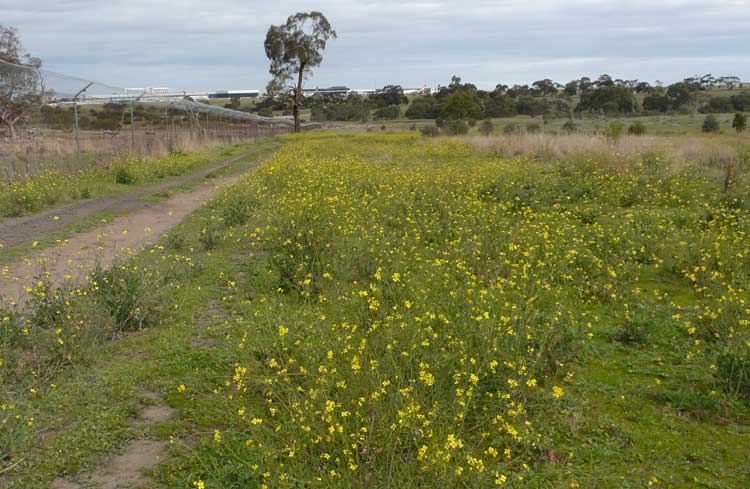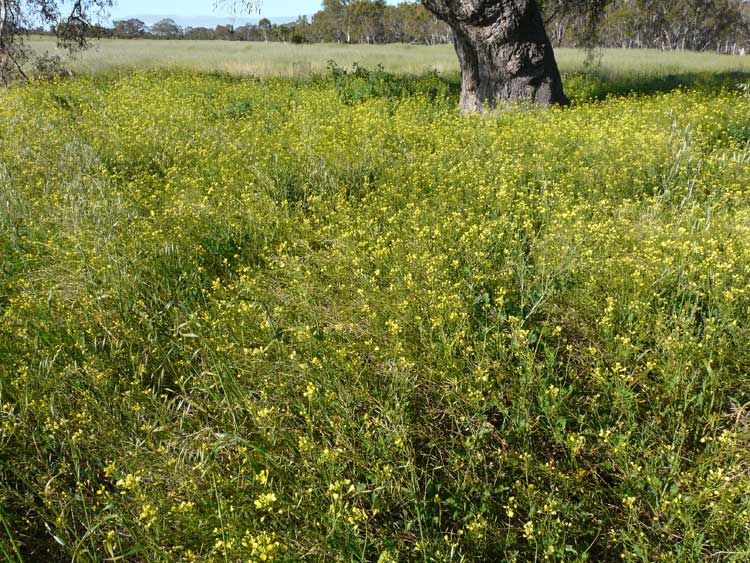
Wild Radish occurs under in the park under some mature trees, but more commonly along tracks or fences where the grass has been slashed or killed. This weed is easy to kill but hard to control, as it can flower all year round if it is not too dry, plants can produce seed in as little as 40 days after germination, and it has a persistent seed bank.

Biological Control
Wild Radish is a difficult candidate for biological control because it is closely related to edible Radish and also to Canola. Nevertheless the CSIRO searched for insect and fungal pests on Wild Radish in the Mediterranean region in 1997-2003 (Scott 2012). One insect species, a Gall Midge was investigated and found to also attack Canola. Some other insect species were not investigated further because they could not be found in sufficient numbers. Twelve fungal pathogens were tested and found to attack Canola. A further twelve pathogens were found to already exist on Wild Radish in Western Australia. Although they may not be host specific, further research was suggested into ways to augment their impact. This research would presumably only be applicable to farming.